 July Wildflowers
July Wildflowers July Wildflowers
July Wildflowers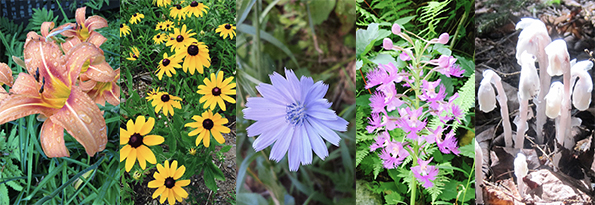 |
||
| Home | April-May | June | July | August-September | ||
| Photo (Click on image to see larger format image) | Description | Date |
 |
Milkweed: Common milkweed is one of about 115 species of milkweed that occur in the Americas. Numerous insects are attracted to this nectar rich plant. In the northeast, it is among the most important food plants for monarch caterpillars. Since the milkweed plays a critical role in the life cycle of the monarch butterfly as well as other insects, it is important that we encourage the spread of milkweed. American Meadows has a page dedicated to How to Grow Milkweed. A January 25, 2019 New York Times article entitled "Are We Watching the End of the Monarch Butterfly?" focuses on the challenges facing the Monarch's population. Reference: Common Milkweed (Asclepias syriaca L.), USDA For the Monarch Butterfly see Butterflies of the Adirondacks. Photo: AF, LL, & SD |
July 2 |
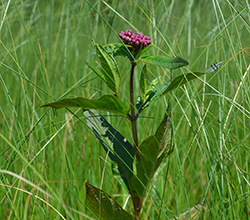 |
||
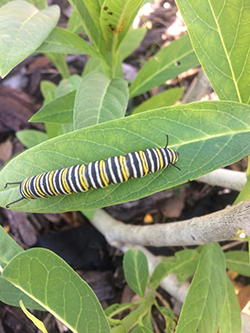 |
||
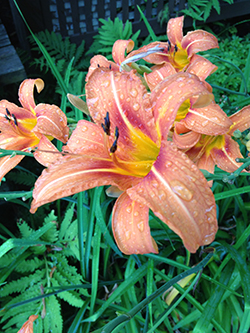 |
Orange Day (Tiger) Lily: native to Asia, the Orange Day Lily, or Tiger Day Lily, is very successful in cultivation. Escaping cultivation, the Orange Day Lily has spread abundantly in fields and along our roadsides, hence the common name of Ditch Lily. It can be considered an invasive species. Reference: Wikipedia. Photo: AF & LL |
July 2 |
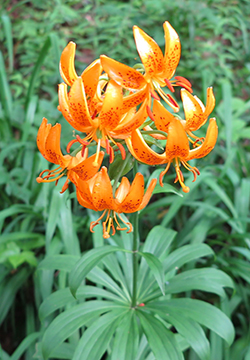 |
||
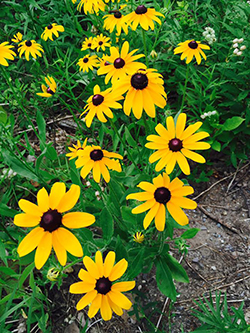 |
Black Eyed Susan: also known as brown-eyed Susan and brown betty, is a North American plant in the sunflower family, It is native to Eastern and Central North America. The plant is a medicinal plant in traditional Native American medicine. Native Reference: Wikipedia Photo: AF |
July 2 |
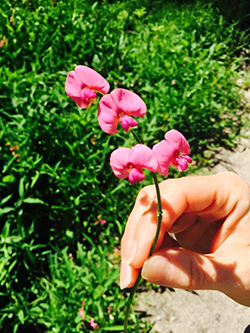 |
Sweet Pea:
Photo: AF |
July 3 |
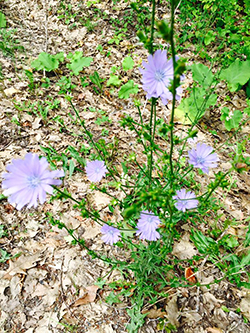 |
Chicory: also known as blue daisy and blue dandelion, chicory is a member of the dandelion family. It is a wild plant on roadsides in its native Europe and now common in North America. The plant has been a coffee subsitute. Reference: Wikipedia Photo: AF & DC |
July 8 |
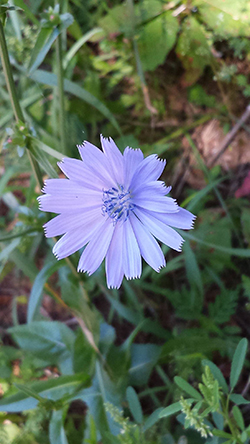 |
||
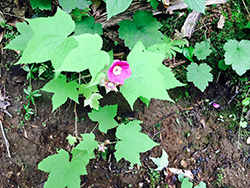 |
Purple Flowered Rasberry:
Photo: AF |
July 8 |
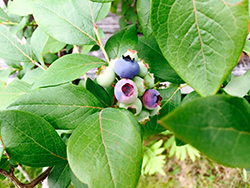 |
Blueberries ripening:
Photo: AF |
July 9 |
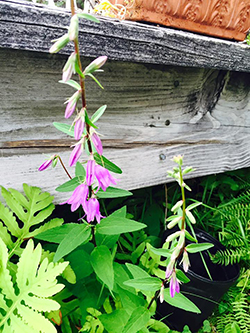 |
Creeping Bellflower: known also as rampion bellflower, is a plant native to Europe and western Siberia and it has been introduced to North America, where it has become an extremely invasive weed, choking out other plants. Non-native (invasive) Reference: Rob Sproule, "Creeping Bellflower: The Zombie Weed."
Photo: AF |
July 11 |
 |
Crownvetch: is a fast and low growing vine. It is native to Africa, Asia, and Europe, and is commonly used since the 1950s throughout the United States and Canada for erosion control, roadside planting. It has become an invasive species. Non-native (invasive) Reference: Susan Patterson, "Crown Vetch Plants." Photo: AF |
July 12 |
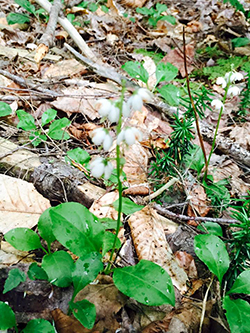 |
Lesser Pyrola: also known as Shinleaf, it is a native Adirondack wildflower. It was used by Native Americans for various ailments. Native Reference: Shinleaf in Wildflowers of the Adirondacks Photo: BM & AF |
July 14 |
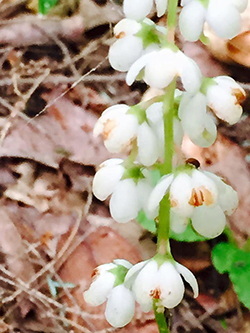 |
||
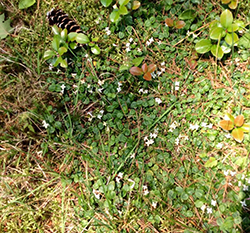 |
Partridgeberry: an evergreen herb which produces small, fuzzy white flowers. Also known as Twinberry, Deer Berry, and Squaw Berry. Native Reference: Wildflowers of the Adirondacks.
Photo: BM |
July 14 |
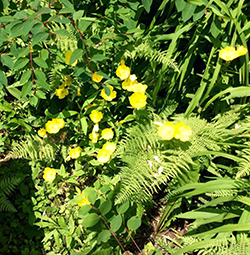 |
Primrose:
Photo: BM |
July 14 |
 |
Yellow Wood Sorrel:
Photo: AF |
July 14 |
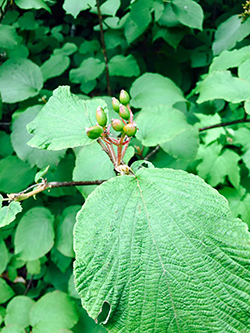 |
Hobblebush Berries Ripening:
Photo: AF |
July 14 |
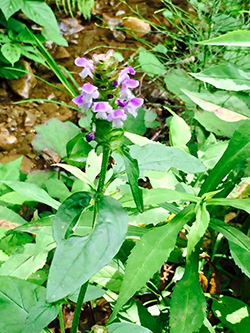 |
Heal All: also commonly known as self-heal and heart-of-the-earth, Heal All is a edible plant. The young leaves and stems can be eaten raw in salads and can be boiled and eaten as a potherb. Heal All has been long used in herbal medicine (see article in WebMD)
Photo: AF |
July 15 |
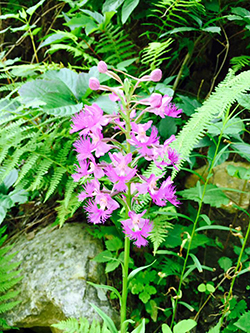 |
Large Purple Fringed Orchid: a perennial found in cool moist woods and swamp edges. Reference: Lady Bird Johnson Wildflower Center. See Wildflowers of the Adirondacks for the related White Fringed Orchid.
Photo: AF |
July 16 |
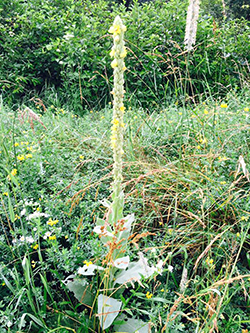 |
Common Mullein: a biennial plant that can produce a 2 m stalk with small, yellow flowers. Used for a variety herbal remedies. Native to Europe, northern Africa, and Asia. It was imported to the United States in the 18th century and cultivated for its medicinal properties. Non-native Reference: Wikipedia Photo: AF |
July 18 |
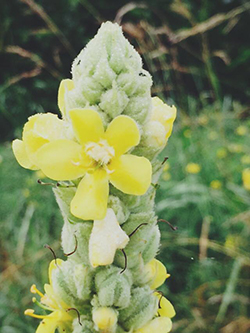 |
||
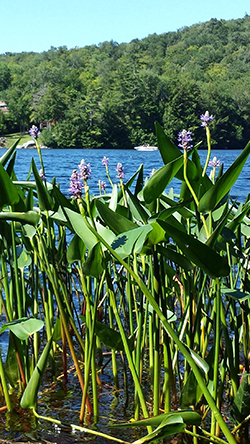 |
Pickerelweed in Bloom: flourishes in marshes, swamps, bogs, and shallow edges of ponds and streams. Pickerelweed is an important food source for waterfowl and wildlife. Native Reference: Wildflowers of the Adirondacks. Photo: DC |
July 20 |
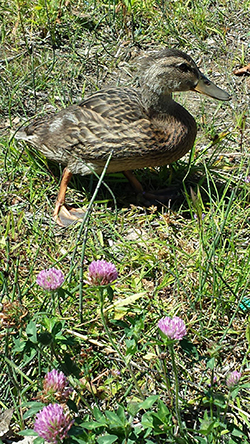 |
Red Clover with Baby Mallard:
Photo: DC |
July 20 |
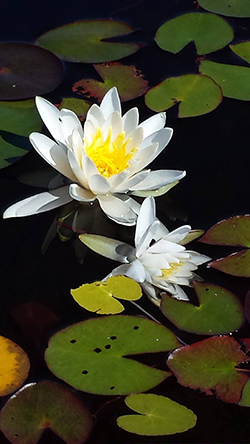 |
White water Lily: aquatic wildflower that produces fragrant and showy white flowers. Native Reference: Wildflowers of the Adirondacks.
Photo: DC |
July 20 |
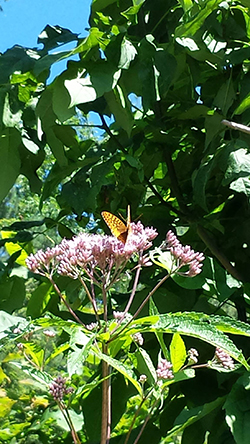 |
Joe Pye Weed with a great spangled fritillary: Joe Pye Weed is a plant in the sunflower family. Used for various ailments by Native Americans. Native Reference: Wikipedia. For the Great Spangled Fritillary see Butterflies of the Adirondacks. Photo: DC |
July 20 |
 |
Clintonia Berries: poisonous blueberries.
Reference: Wildflowers of the Adirondacks.
Photo: JD |
July 24 |
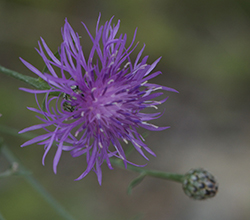 |
Thistle:
Photo: LL & AF |
July 25 |
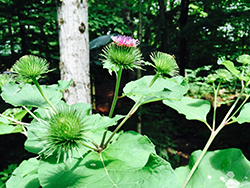 |
||
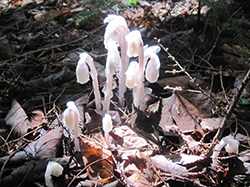 |
Indian Pipes: also known as Ghost Plant, is a parasitic plant that lacks chlorophyll so is unable to obtain energy from sunshine. It absorbs nutrients from decayed organic material. Native Reference: Wildflowers of the Adirondacks. Photo: LL |
July 28 |
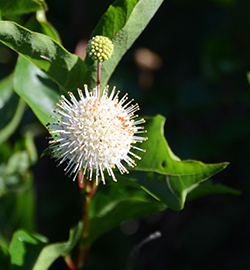 |
Buttonbush: found in wet soils especially in swamps and edges of streams and ponds. Ducks and other water birds consume the seeds. Native Reference: Lady Bird Johnson Wildflower Center.
Photo: LL |
July 30 |
| Home | April-May | June | July | August-September | ||